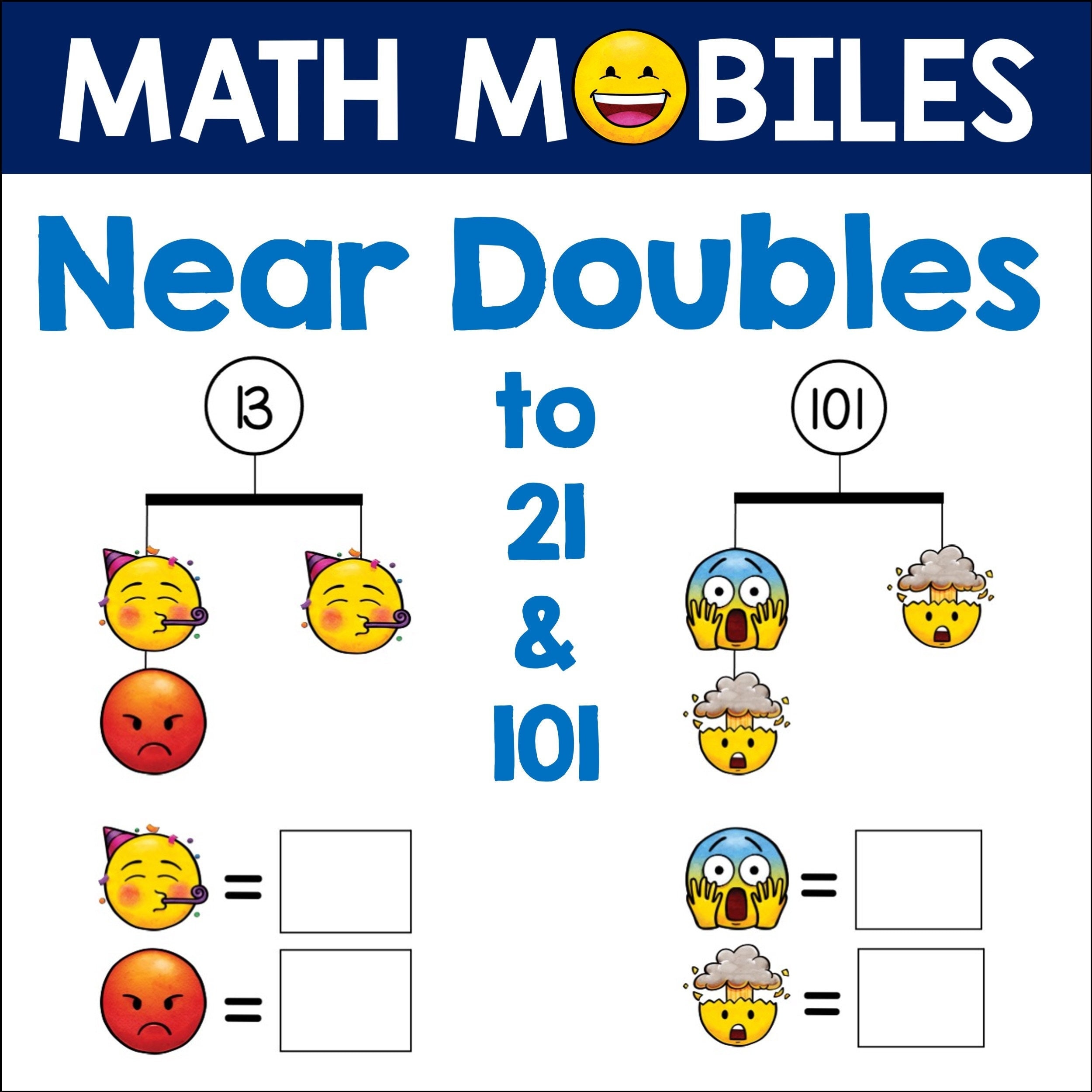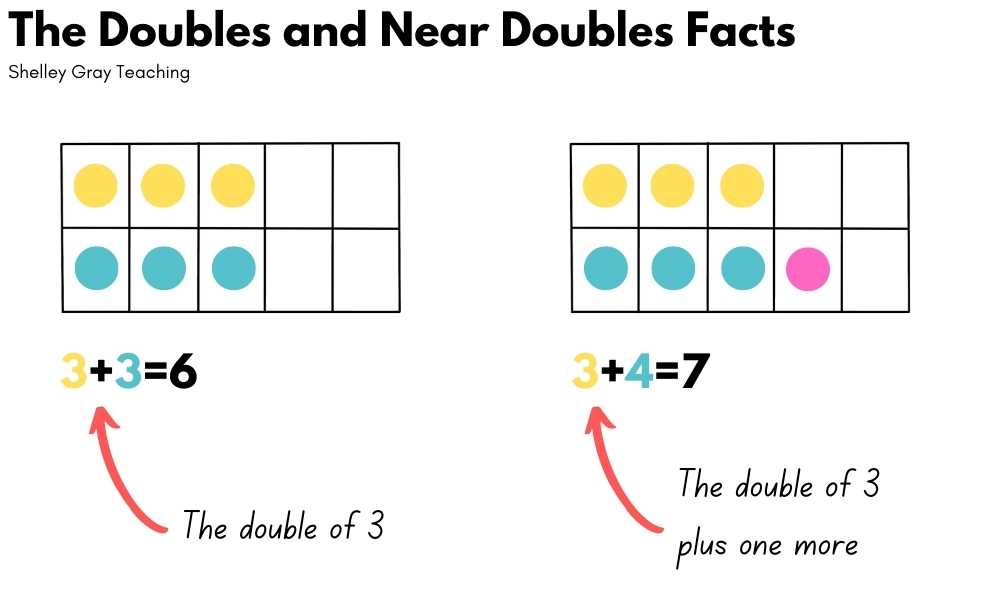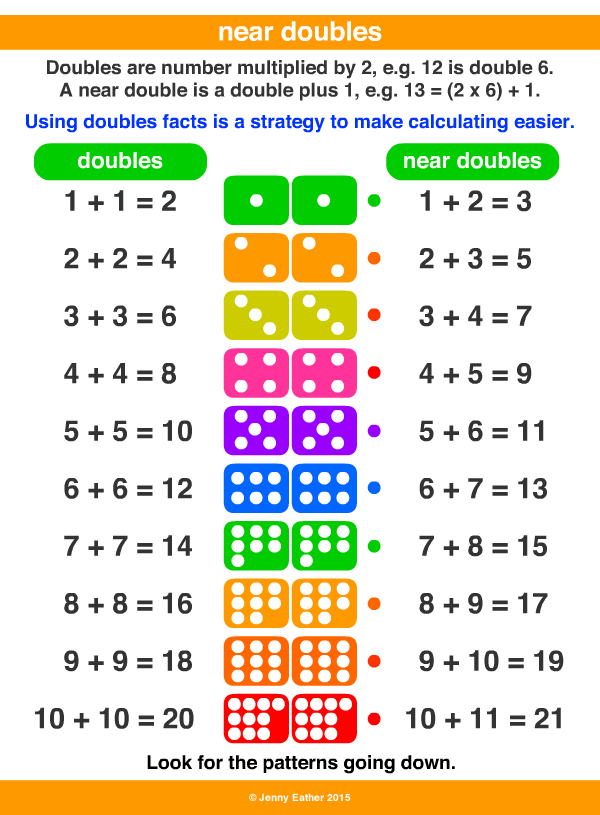What Is Near Doubles In Math - For these facts, we can use what we know about doubles to solve a new fact. For example, 3+ 5 is considered a near double because it is close to. Near doubles are facts like 5+6, 10+11, or 3+4. A near double is a math fact that is close to a double’s fact.
For example, 3+ 5 is considered a near double because it is close to. Near doubles are facts like 5+6, 10+11, or 3+4. For these facts, we can use what we know about doubles to solve a new fact. A near double is a math fact that is close to a double’s fact.
A near double is a math fact that is close to a double’s fact. For example, 3+ 5 is considered a near double because it is close to. For these facts, we can use what we know about doubles to solve a new fact. Near doubles are facts like 5+6, 10+11, or 3+4.
The Near Doubles Addition Strategy Maths with Mum
Near doubles are facts like 5+6, 10+11, or 3+4. For example, 3+ 5 is considered a near double because it is close to. For these facts, we can use what we know about doubles to solve a new fact. A near double is a math fact that is close to a double’s fact.
Near Doubles Math Facts Worksheets Early Algebra Math Etsy
A near double is a math fact that is close to a double’s fact. For example, 3+ 5 is considered a near double because it is close to. Near doubles are facts like 5+6, 10+11, or 3+4. For these facts, we can use what we know about doubles to solve a new fact.
The Near Doubles Addition Strategy Shelley Gray
Near doubles are facts like 5+6, 10+11, or 3+4. For example, 3+ 5 is considered a near double because it is close to. A near double is a math fact that is close to a double’s fact. For these facts, we can use what we know about doubles to solve a new fact.
How to Teach the Doubles Facts So Your Students Actually Understand
Near doubles are facts like 5+6, 10+11, or 3+4. For example, 3+ 5 is considered a near double because it is close to. A near double is a math fact that is close to a double’s fact. For these facts, we can use what we know about doubles to solve a new fact.
Lucky to Learn Math Subtract Near Doubles Lesson 2.16
For these facts, we can use what we know about doubles to solve a new fact. For example, 3+ 5 is considered a near double because it is close to. Near doubles are facts like 5+6, 10+11, or 3+4. A near double is a math fact that is close to a double’s fact.
Near doubles to add 488009 Shama_1 LiveWorksheets
For these facts, we can use what we know about doubles to solve a new fact. Near doubles are facts like 5+6, 10+11, or 3+4. A near double is a math fact that is close to a double’s fact. For example, 3+ 5 is considered a near double because it is close to.
Lucky to Learn Math Add with Near Doubles Lesson 2.5
Near doubles are facts like 5+6, 10+11, or 3+4. For these facts, we can use what we know about doubles to solve a new fact. A near double is a math fact that is close to a double’s fact. For example, 3+ 5 is considered a near double because it is close to.
Doubles Numbers
A near double is a math fact that is close to a double’s fact. For these facts, we can use what we know about doubles to solve a new fact. For example, 3+ 5 is considered a near double because it is close to. Near doubles are facts like 5+6, 10+11, or 3+4.
Printable Near Doubles Worksheet
Near doubles are facts like 5+6, 10+11, or 3+4. For example, 3+ 5 is considered a near double because it is close to. For these facts, we can use what we know about doubles to solve a new fact. A near double is a math fact that is close to a double’s fact.
14 Strategies for Teaching Addition Lucky Little Learners
For these facts, we can use what we know about doubles to solve a new fact. Near doubles are facts like 5+6, 10+11, or 3+4. For example, 3+ 5 is considered a near double because it is close to. A near double is a math fact that is close to a double’s fact.
A Near Double Is A Math Fact That Is Close To A Double’s Fact.
Near doubles are facts like 5+6, 10+11, or 3+4. For example, 3+ 5 is considered a near double because it is close to. For these facts, we can use what we know about doubles to solve a new fact.









